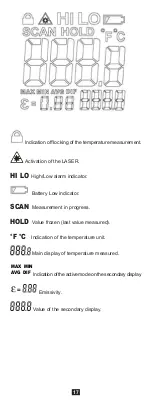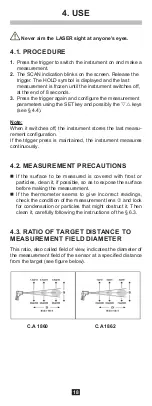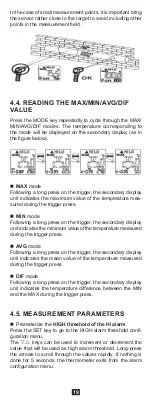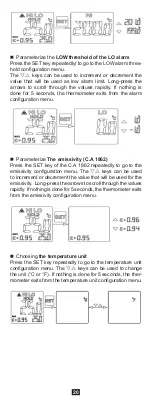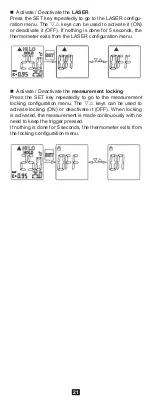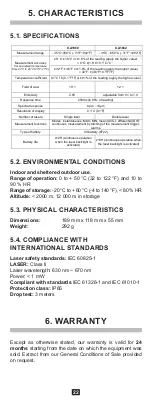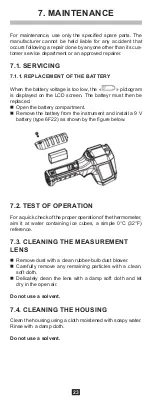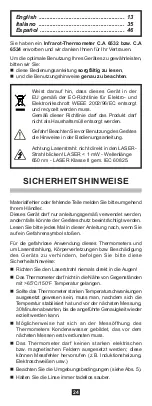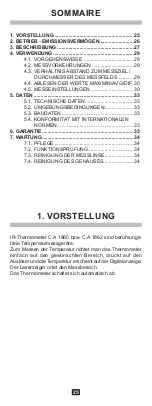
15
2. OPERATION - EMISSIVITY
Any body of which the temperature is above absolute zero
(0K, or -273.15°C) emits electromagnetic radiation, also called
infrared thermal radiation, that depends on its temperature.
The lens of the instrument captures this energy and focuses it
on an infrared detector. This detector, a thermopile, delivers a
voltage signal proportional to the quantity of energy received,
and therefore to the temperature of the object.
Depending on their nature, their surface condition, etc., the
objects observed both emit infrared radiation and reflect
incident radiation.
In consequence, unlike matt surfaces, shiny or highly polished
surfaces tend to emit little energy at a given temperature but
rather reflect the radiant environment.
Emissivity, the value of which can range from 0.1 for a highly
reflective body to 1 for a black body, characterizes the capacity
of a material to emit infrared radiation.
In the case of the C.A 1860 thermometer, the emissivity is
preset to 0.95, the commonest value.
With the C.A 1862 thermometer, the emissivity can be
adjusted from 0.1 to 1; the value should be chosen according
to the material observed.

















